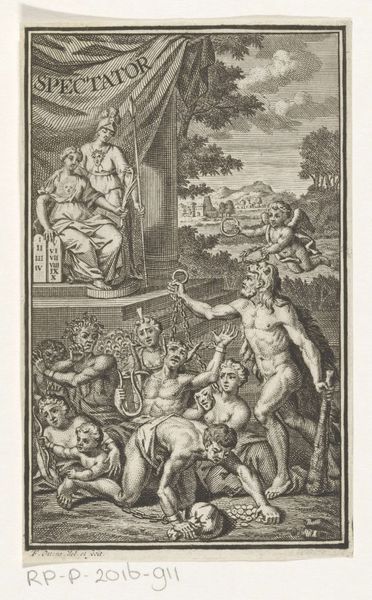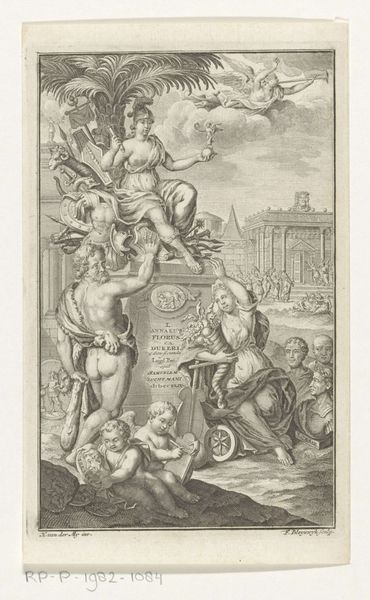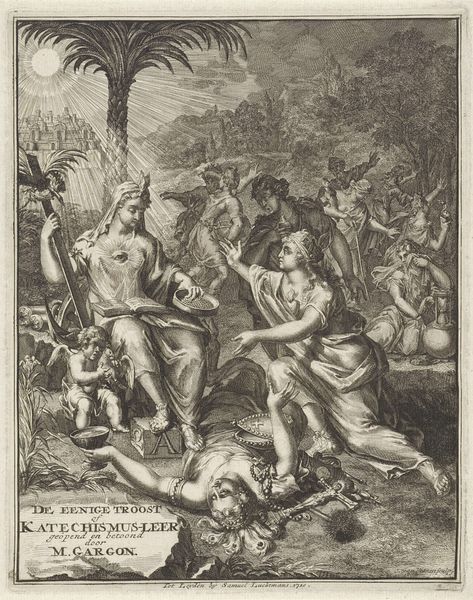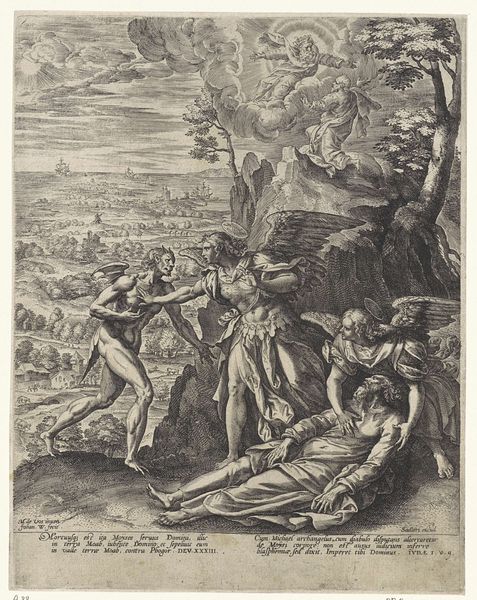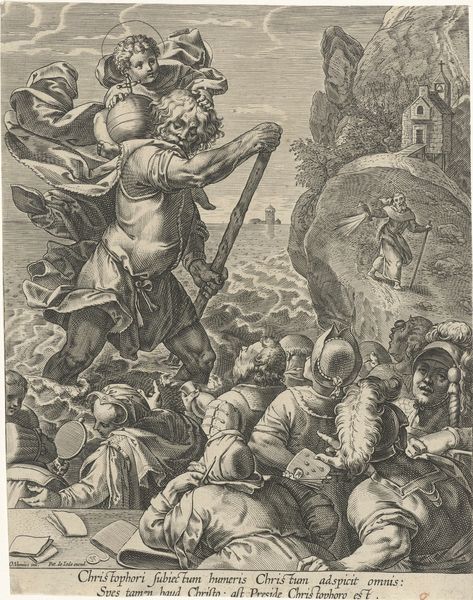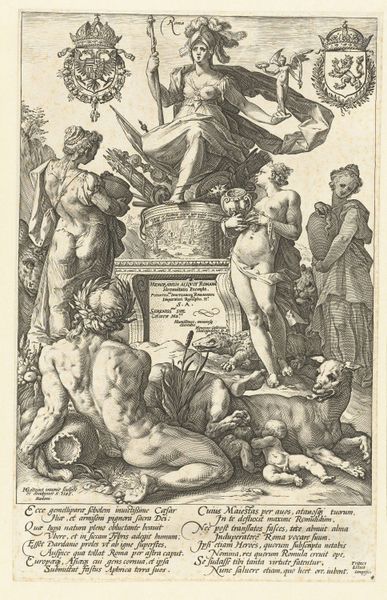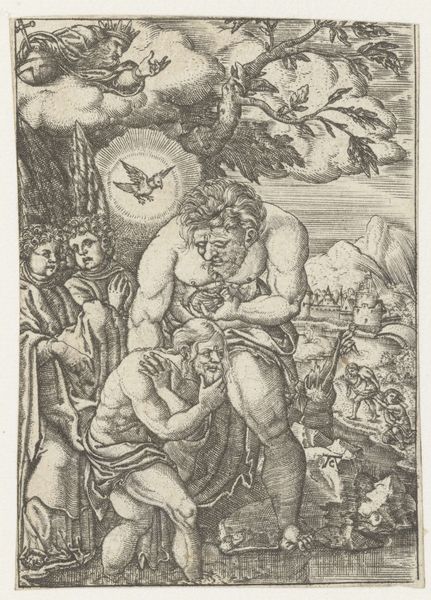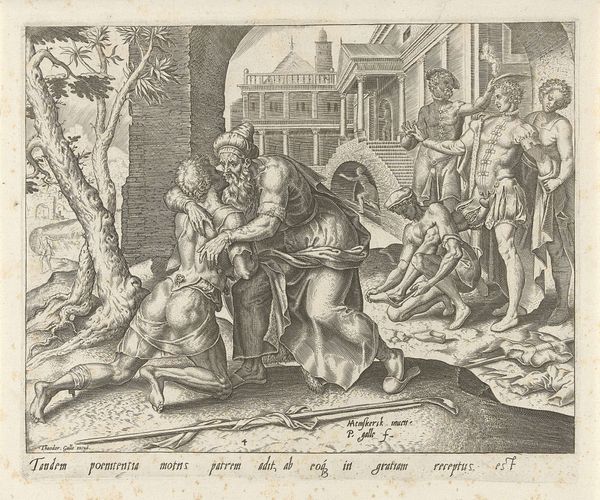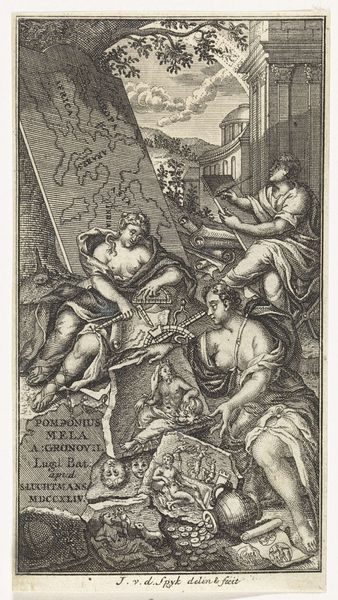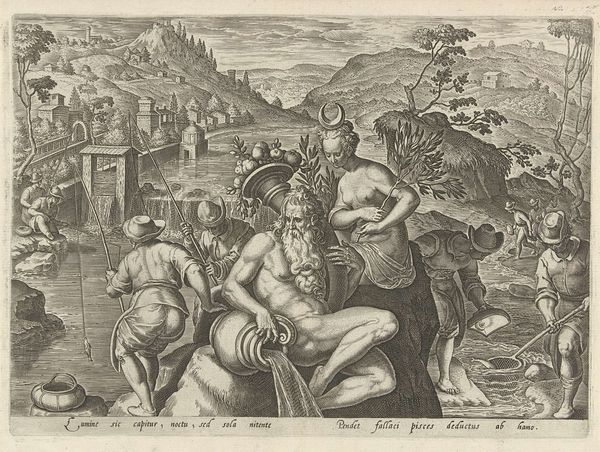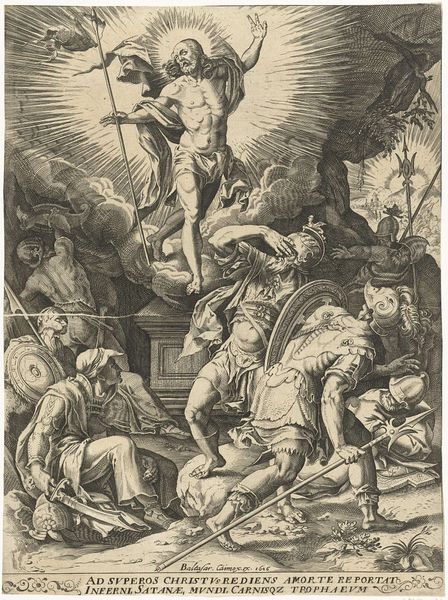
Allegorie op de Nederlandse taal met de Hollandse Maagd en Leeuw 1681 - 1731
0:00
0:00
print, engraving
#
allegory
#
baroque
# print
#
landscape
#
cityscape
#
engraving
Dimensions: height 185 mm, width 137 mm
Copyright: Rijks Museum: Open Domain
François van Bleyswijck made this etching, "Allegory on the Dutch Language," in 1731. Etching is a printmaking technique that relies on acid to bite lines into a metal plate, which is then inked and pressed onto paper. Look closely, and you can see the character of the etched line, slightly rough and irregular, a testament to the corrosive process. The density of these lines creates tone, shadow, and texture, defining the figures of the Dutch Maiden and Lion, surrounded by symbols of language and learning. The very act of etching has a cultural significance here. Printmaking enabled the widespread dissemination of ideas, fueling the engines of intellectual exchange and commerce in the Dutch Golden Age. It democratized images, making them available to a broad public. Consider how the material reality of the etching—its reproducible nature— mirrors the broader societal shifts towards mass communication. It encourages us to think about art not just as singular masterpieces, but as active participants in shaping public discourse.
Comments
No comments
Be the first to comment and join the conversation on the ultimate creative platform.
